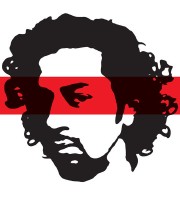Noraly Beyer, Love after Love
by Jörgen Tjon A Fong
Dear Aunt and Family,
I have thought of you many times but to day [sic] is the first time that I succeeded in finding time to write you a few lines.Ralph and I are fine, and have not gotten the “flue” [sic] yet altho [sic] it is pretty bad down here at present. It seems to be among the older folks and children. The graded schools and High School is closed here but only a few students of K.U. have it, they thought it was not necessary to close college until they see that it must be done. Heard you folks had it this fall but hope you are all over it and feeling fine.
The above quote is from a letter that could have been written in May 2020. Amsterdam has fallen silent, schools are closed, the squares are empty, the streets deserted. Behind this calm, there rages a storm caused by the COVID-19 virus. It has driven people into their homes, closed stores, and brought public life more or less to a standstill.
However, the quote shown above was not written in May 2020, but around one hundred years previously. Myrtle, who wrote the letter in 1918, was a student at the University of Kansas, when the Spanish flu struck. In October, the university closed its doors for fear of large-scale infection, while the students were forbidden from leaving the city in order to prevent them spreading the virus.
Then, as now, public life was brought to a standstill and society had to adjust to the everyday reality in which the virus reigned as a silent killer.
There have been many occasions in history when people went into self-isolation or quarantine, whether voluntarily or otherwise. What impact did that have on them? What are the similarities with our current situation? And how can you show this if you are no longer able to meet with each other?
In recent weeks, many artists have depicted the consequences of the ‘smart lockdown’ and the ensuing self-isolation.
Compared to 1918, there are now many more channels for expressing feelings of isolation, whether through image, text, or sound.
The main focus of this virtual room is entries from Amsterdam’s residents, but there are also contributions from students of the Academy of Theatre and Dance in Amsterdam who, like those in Kansas in 1918, have been unable to attend lessons because the academy has closed its doors.
The students have been having lessons using Zoom, with the emphasis on documentary theater. They interviewed various people in quarantine, while at the same time using an earpiece to record the texts, exactly replicating the way the interviewees told their respective stories, using the recorded delivery method. As well as these sound recordings, the students collected material from letters by people who had previously been in enforced isolation, such as James Foley, Natascha Kampusch, and Kaspar Hauser. Inspired by Jan Fabre, Pina Bausch, and Marina Abramović, a number of performances have been developed in which physical reality plays a key role.
